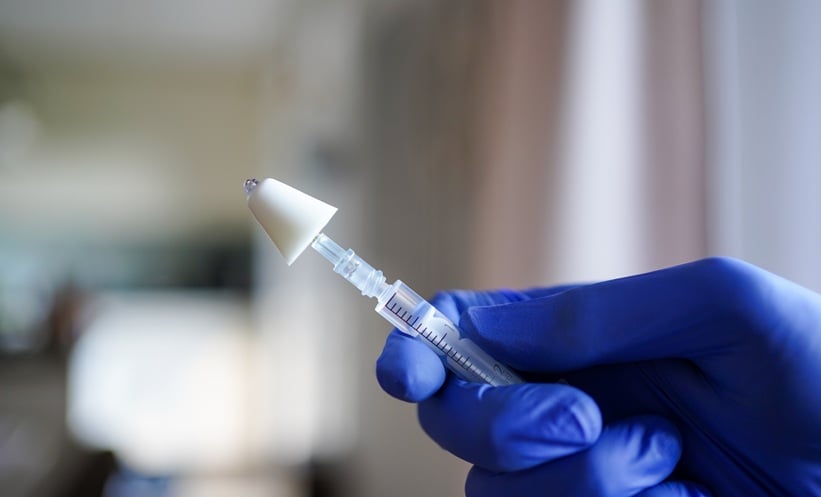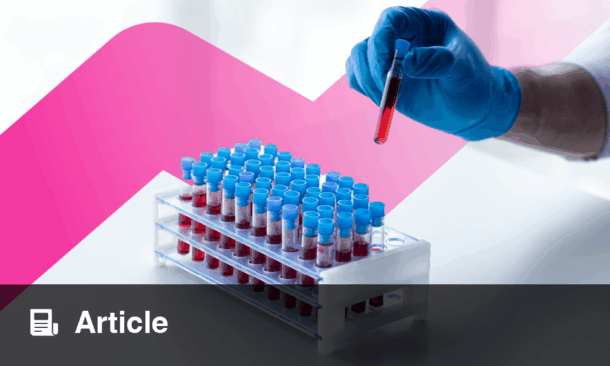Author: Katie Wright, EMJ, London, UK
Citation: EMJ Microbiol Infect Dis. 2025;6[1]:26-30. https://doi.org/10.33590/emjmicrobiolinfectdis/PBLK4850
![]()
INTRODUCTION
The OUCRU is a Wellcome Major International Programme that has been at the forefront of infectious disease research for over three decades. Founded in 1991, OUCRU employs over 600 people across four research units in Asia, and its work is crucial to understanding and combating infectious diseases in the region. In 2023 alone, countries such as Indonesia, Vietnam, and Nepal reported alarmingly high numbers of new TB cases, contributing to a total of 1.35 million new TB cases across a population of 410 million people in Southeast Asia.2 This highlights the immense burden that TB continues to pose in the region and the need for intensified research efforts.
Thwaites’ presentation focused on OUCRU’s vision to have a local, regional, and global impact on public health by leading research programmes that address infectious diseases, with particular emphasis on TB. Despite the advances in diagnostics and treatment in recent years, the reality is that TB remains one of the deadliest infectious diseases worldwide. According to the (WHO) Global Tuberculosis Report 2024, there were approximately 10.8 million TB cases globally in 2023, with 1.25 million deaths.2
THE GLOBAL TUBERCULOSIS CRISIS: WHERE ARE WE NOW?
In recent years, TB-related deaths have remained a major concern. While SARS-CoV-2 briefly surpassed TB as the leading cause of infectious disease-related deaths, TB has regained its position as the top infectious killer globally.1 The lack of significant progress in reducing TB-related mortality is alarming, as it points to the ineffectiveness of current disease control tools.3 One of the most telling indicators of this stagnation is the fact that global TB deaths have not declined substantially over the past few years, with the trend remaining flat, or even slightly increasing.2
In 2015, the WHO launched the End TB Strategy, which set ambitious targets to eliminate TB as a global health threat by 2035. This strategy outlined a 10% reduction in TB incidence per year, aiming for a 90% reduction in TB deaths by 2035; however, despite these targets, the global trend has been disappointing, with a current decline of only 1.5% per year.4
WHY ARE WE IN THE WRONG PLACE?
Outdated Tools
The tools used for TB prevention, diagnosis, and treatment have remained largely unchanged for decades. For example, the Bacille Calmette-Guérin vaccine, developed in the early 20th century, is still the most widely used vaccine for TB globally, despite its limited efficacy in protecting against pulmonary TB in adults.5 Diagnostic methods like the Ziehl-Neelsen stain, developed in 1882, continue to be used in many parts of the world, despite their limitations.6 Similarly, the Mantoux skin test, developed in the 1920s, is still used to diagnose latent TB.7 In terms of treatment, rifampicin, first introduced in 1963, remains one of the cornerstone drugs for TB, despite the emergence of drug-resistant strains.8
Poverty and Politics
TB is often referred to as a disease of poverty, as it disproportionately affects people in low-income countries with limited access to healthcare. There is a strong correlation between GDP per capita and TB incidence.9 Despite the urgent need, funding for increased TB research and control has remained insufficient, with little growth in global TB research funding between 2015–2022.10
THE SUN IS RISING: NEW HOPE FOR TUBERCULOSIS CONTROL
New Vaccines
One of the most promising developments in TB prevention is the M72/AS01E vaccine by GSK plc (London, UK). In a Phase II trial, the vaccine demonstrated promising results in preventing TB in individuals who were immunologically primed for the disease,10 and a large-scale Phase III trial is currently underway, with over 90% of the 20,000 participants recruited.
New Diagnostic Technologies
Significant advances have been made in TB diagnostics, although their global accessibility remains limited. Traditionally, many TB diagnoses have relied on Ziehl-Neelsen staining, a method that remains widespread despite the introduction of superior technologies. The first major technological leap came with the Xpert MTB/RIF test (Cepheid Inc, Sunnyvale, California, USA), endorsed by the WHO in 2010, offering rapid, automated molecular diagnosis. Its improved version, Xpert Ultra (Cepheid Inc, Sunnyvale, California, USA), released in 2017, demonstrated even greater sensitivity and accuracy.11 Despite these advances, data from the WHO Global Tuberculosis Report show that only around 50% of TB cases worldwide are diagnosed with WHO-recommended molecular tests.3 Meanwhile, the proportion of bacteriologically confirmed cases has plateaued at approximately 60% between 2015–2023, reflecting persistent challenges in culturing Mycobacterium tuberculosis.12
In addition to molecular tests, immunological assays have evolved. Traditional tuberculin skin tests have been complemented, and often surpassed, by interferon-gamma release assays such as T-SPOT (Oxford Immunotec, Abingdon, UK) and QuantiFERON (Qiagen, Hilden, Germany), which offer greater specificity in detecting immunological reactivity to M. tuberculosis.13 However, the assumption that immunological reactivity equates to latent TB has been increasingly questioned. Recent analyses have highlighted the need for a paradigm shift, recognising that infection may lie along a dynamic spectrum rather than a binary ‘latent’ or ‘active’ state.14
This evolving understanding has led to the concept of ‘subclinical TB’. A notable preprint by Esmail et al.15 used PET/CT imaging to monitor high-risk individuals over five years, which identified a high burden of subclinical TB that sometimes progressed to symptomatic disease. This finding reiterates the complex biology of TB progression and suggests that new diagnostic frameworks are needed.
Finally, there have been significant developments in drug resistance testing with the introduction of the Xpert cartridges capable of detecting resistance to second-line drugs, though their high cost limits their accessibility for lower income countries. Next-generation sequencing approaches, while technically challenging and expensive, offer rapid, comprehensive insights into drug resistance mechanisms and epidemiological patterns, helping drive the future of personalised TB care.
New Treatment Options
TB treatment has seen dramatic improvements in recent years, particularly for multidrug-resistant and extensively drug-resistant TB. Historically, TB treatment relied on long, toxic regimens, but new combinations are rapidly changing the landscape. Trials such as Nix-TB and ZeNix have shown that a 6-month, all-oral regimen consisting of bedaquiline, pretomanid, and linezolid (BPaL) can outperform the older, prolonged multidrug-resistant TB treatment approaches.14 These regimens significantly improve cure rates while reducing toxicity and treatment duration.1
There is also increasing evidence that shorter regimens may be effective for rifampicin-sensitive TB. Trials such as the 4-month rifapentine-moxifloxacin regimen by Dorman et al.,16 and the SHINE trial in children by Turkova et al.,17 demonstrated comparable efficacy to standard 6-month regimens, offering the potential for shorter, more manageable treatment courses for many patients.
More radical approaches, like the ultra- short 8-week regimens explored by Paton et al.,18 are still in proof-of-concept stages, but hold promise for further future reductions in treatment duration.
However, growing resistance to newer drugs like bedaquiline is cause for concern. Recent studies show increasing rates of bedaquiline resistance among treated patients, threatening the long-term success of these regimens.19,20 The emergence of bedaquiline-resistant strains is indicative that without continued vigilance and new drug development, we risk losing the progress made in treating drug-resistant TB, and emphasises the urgent need for novel agents to treat TB and prevent further resistance.
The TB drug development pipeline is now robust, with a strong focus on new drug classes and mechanisms. The UNITE4TB21 initiative is accelerating the development of several promising candidates, including those that target ethionamide activity and cell wall synthesis.2
As a result of these collective efforts, the TB treatment landscape is entering an exciting new phase, with the real possibility of shorter, safer, and more effective therapies on the horizon.
FUTURE APPROACHES
Current TB clinical trials face major challenges: they are expensive, highly bureaucratic, and predominantly led by high-income countries, with limited involvement from local researchers and national TB programmes. This model is increasingly viewed as unsustainable, with minimal investment in local capacity and overreliance on international contract research organisations. Thwaites proposes a new approach inspired by agile, locally led efforts, emphasising reduced bureaucracy, lower costs, and strong national leadership. Building trial capacity within national TB infrastructures, strengthening local data systems, and fostering innovation from within high-burden regions are essential to creating a more effective, resilient, and inclusive model for TB research.
In answer to the question: is the sun setting or rising on TB research? Thwaites commented: “I think it’s rising.” Despite the ongoing challenges, this is a phenomenally exciting and positive time for TB. With smarter trial models, greater local leadership, and a shared global commitment, progress towards truly ending the TB epidemic can be accelerated.
CONCLUSION: A LONG ROAD AHEAD
The global TB burden remains high, and many challenges remain in terms of diagnosis, treatment, and prevention, particularly in low-income countries. However, the advancements in vaccines, diagnostics, and treatment strategies offer hope for the future. With continued investment in research, better access to diagnostics and treatment, and a focus on addressing the social determinants of health, there is a realistic chance that the global community can meet the WHO’s End TB targets and bring an end to the tuberculosis epidemic.3,5,9







